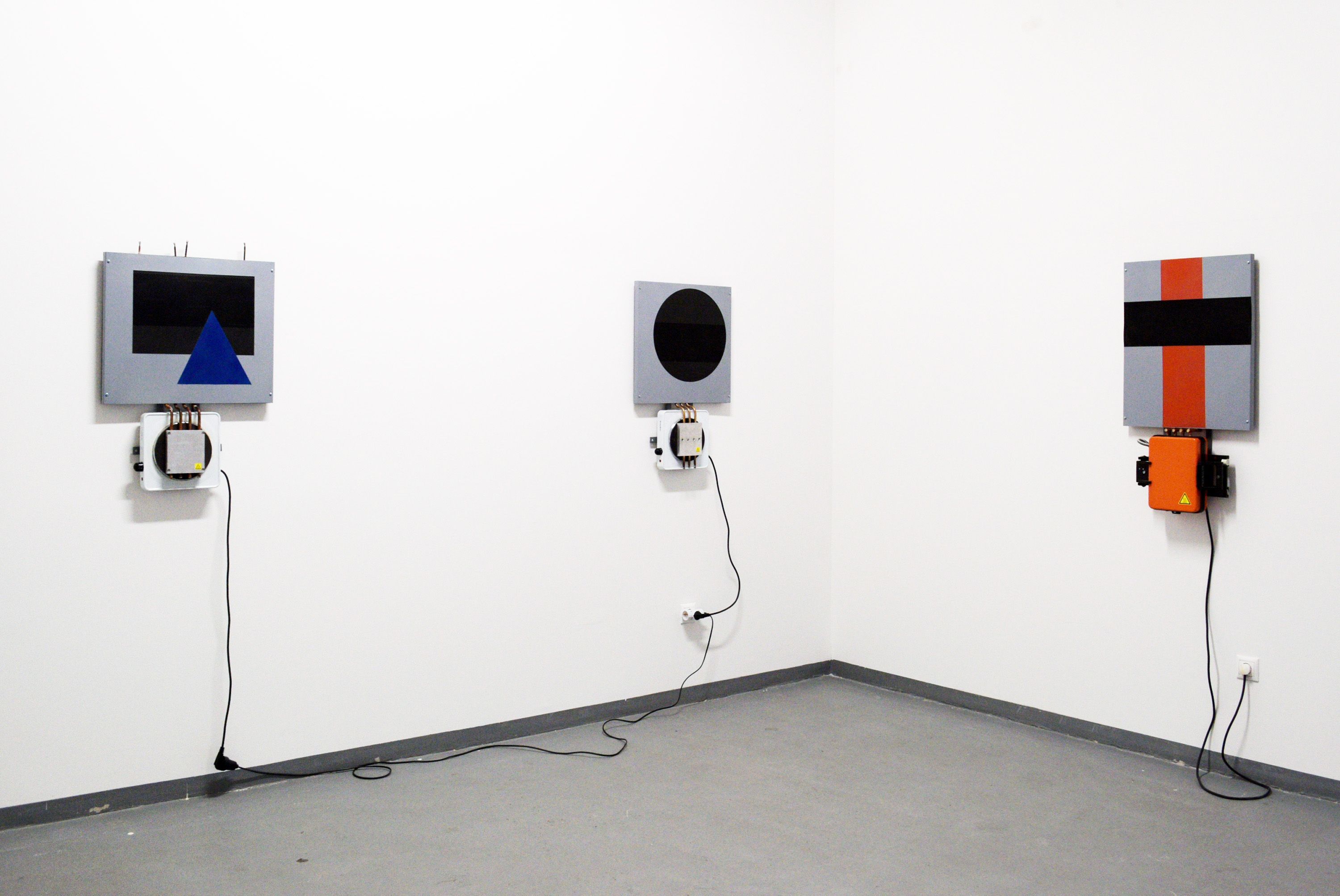Péter Tamás Halász
Supremacy
| Venue: | acb Attachment |
| Date: | Jan 15 – Mar 03, 2016 |
Description
As its title suggests, the exhibition of Péter Tamás Halász is at once a commentary to Kazimir Malevich’s theory of Suprematism and a new artistic realization of Halász’s social and visual criticism.
Similar to many of his earlier works, the exhibited objects of Halász are operational objects whose impact lies in the interplay between their form and functionality. Assembled from familiar components of domestic appliances, but their function unidentifiable based merely on their appearance, the surfaces of the objects display some well-known Suprematist compositions by Malevich. A point of reference for figuring out the functionality of the objects is provided by thermographic images, in which the surfaces of different temperatures appear in different colors, revealing not only the function of the objects but also the acronyms hidden under their surface. Through these acronyms, which are more-or-less well-known English abbreviations of institutions and concepts, the artist addresses such ideas, phenomena, and problems as human rights, wealth and poverty, and environmental pollution.
The global issues of the present collide with the formal devices of modernism – the latter not only through the visual reference to Malevich but also through the simplistic and exclusively functional design, which is a characteristic of mass-produced appliances.
The exhibited objects of Halász are also connected in other ways to the theory of Suprematism, one of the fundamental ideas of which is that it “tenaciously denies the reality of the world of objects, because – similarly to modern microphysics – it considers that world a correlation of various complex, purely energy-based processes. (Zoltán Sebők) Halász’s method of hiding the real processes taking place inside the objects (as it happens, energy dissipation in the form of heat) behind abstract forms detached from the material world, is a critical paraphrase of Malevich’s theory. The criticism, of course, is not addressed to Malevich, but to the modernist utopia he also represents, which has been realized in practice in the birth of the post-industrial consumer society and the ever so worrying global problems it gave rise to.
Péter Tamás Halász (1969) has been a regular participant of Hungarian and international exhibitions since the early 2000s. Although he graduated as a painter, after finishing university he began making objects and installations. Over the past ten years, his works have focused more and more on social and environmental problems. Typically using recycled industrial and technological components, crafted artisanal meticulousness, his carefully designed works often execute some operation.
The exhibition will be on view until 3 March.

